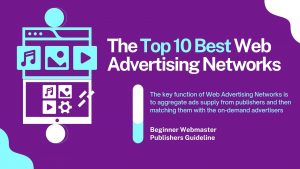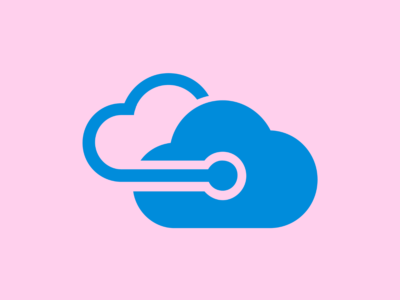Realistically, it’s that time of the year again when the Holiday Marketing Campaigns will start rolling out—the festive season is fast approaching. In layman’s language, the most critical and profitable holidays are upon us—the ones that have proven to be the grand finale for many business product sales and revenue generation. Ready, steady go: So much is at stake during the festive seasons.
From Black Friday over Thanksgiving to Christmas and Boxing Week, the dark and cold time of the year is full of enlightening holidays for the ecommerce business. Are you ready? Are your Holiday Marketing Campaigns prepared for the takeoff? It is time to get you started. According to our holiday shopping experience insights, you must begin to connect early with deliberate business shoppers.
The holiday season is here, and AI-powered tools are changing the game. One thing is sure: Innovative technologies driven by Artificial Intelligence can help retailers surpass the big “Cyber 5” shopping days by identifying and capturing consumer demand from July to January. Now, get ready to multiply the number of peak sales days you have and meet shoppers at every step of their journey.
Buyers are more generous during the winter months. However, during Christmas, buyers actively look for gifts. In 2022, we saw the purchasing of new brands — ones that holiday shoppers hadn’t bought in the past — increase as the season progressed. On that note, brands must maintain a constant momentum value to keep pace with these determined buyers and meet them where they are.
Understanding What Strategic Holiday Marketing Campaigns Entails In Storefronts
As a rule of thumb, digital marketing tools and targeted advertising campaign plans for online businesses are essential to Christmas Marketing and must be carefully planned. This is because Holiday Marketing offers enormous potential to attract customers through campaigns for seasonal purchases and thereby increase sales. In 2020, Shopify generated a record global sales of $2.4 billion.
More so on Black Friday (end of November), a 75% year-over-year revenue growth. There are various reasons why businesses drive holiday ads. An associated report from Shopify shows that apparel and accessories, followed by health and beauty products and home and garden items, are in exceptionally high demand. When a store closes, a web browser window opens; that was the motto.
For beginner marketers, Holiday Marketing refers to creating campaigns spread over different channels based on specific holidays. Generally, for brands, this involves developing a strategy to promote special seasonal offers, attract customers, and thus increase revenue around the event. Markedly, Holiday or Christmas Marketing Campaigns are often used, especially at the end of every year.
Technically, Holiday Marketing Campaigns are most common during Christmas. In addition to the positive festive mood, the potential to increase sales at this time of year lies in the fact that most promotions are limited in time, and this sense of limited special offers encourages customers to buy. In addition, it has been statistically proven that consumers buying behavior is significantly high.
The Steps To Create Successful Holiday Marketing Campaigns For Businesses
Connect early to convert these customers and multiply the number of peak shopping days in your season. AI can be used to identify and capture customer demand beyond the traditional “Cyber 5” shopping days. For your information, according to a 2019 Facebook Guide On Holiday Marketing, September through October are the months to launch branding and sales acquisition ad campaigns.
On that note, if you want your holiday marketing campaigns to be successful, you must spend enough time planning and preparing. You can start by creating a schedule that considers which holidays/occasions and marketing campaign ideas your brand or business needs to include in its strategic plan. Learn more about the best way to plan for your holiday marketing campaigns from this video.
As soon as December hits, we see the emergence of the determined shopping mindset: shoppers using all days and resources available to them, both in-store and online, to get their shopping done ahead of the holidays. As early as May, some holiday shoppers are starting to plan their holiday purchases with intention. They’re balancing budgets, finalizing lists, and researching purchases.
Setting a theme is the first step to a sophisticated Christmas campaign. It should serve as a joint base your company can always look back to in further planning. The theme is also an anchor for consumers, so it’s even more critical that it’s memorable, has good recognition value, and works across multiple channels. With that in mind, below are a few more simple steps to help you start.
Step #1: Planning and researching starts earlier than you think
Everyday early-season activities for shoppers include searching for gift ideas and turning to YouTube creators for reviews and inspiration. Now is the time to strategically share gift guides and create video content that will spark ideas — and gift lists. “Shop with me” videos have exploded as people browse for inspiration and an authentic look at potential gift ideas.
In 2022, the number of video uploads with “shop with me” in the title on YouTube grew over 35% year over year. Then, consider that by the end of October, 50% of Americans are shopping for a holiday over any two days, and, on average, 29% of their holiday shopping is complete. Bottom line: if you’re not in front of shoppers early, you leave sales on the table.
Just like the role of advertisements for Halloween Celebrations, it would help to focus on Black Friday, Thanksgiving, and Christmas as part of your marketing strategy. Try video action campaigns to inspire these shoppers while browsing for gift ideas, then convert them with a clear call to action, whether buying online or directing them to a store.
Step #2: Deliberate shoppers invest time over money
Today’s shoppers are more intentional, with 74% planning ahead. People are being thoughtful, even in environments meant to inspire impulse shopping. For example, on average, online shoppers on social media use 10 touchpoints to inform and evaluate purchases inspired by an influencer. The consideration cycle for the right holiday gift at the right price is also lengthening, given more resources.
Plus, additional channels become available to shoppers. For example, 87% of holiday shoppers report using Google properties (such as Search, Maps, and YouTube) as a shopping resource, while 65% use social media platforms, and 59% turn to top online marketplaces. To help you reach customers across all Google Ads Channels, performance max campaigns help harness results.
In particular, this is due to the power of Google AI across more touchpoints your customers use to shop, like YouTube, Search, Discover, Maps, and Gmail. By all means, show customers you can quickly get them what they need. Create an app campaign for engagement and set up free and fast shipping options, plus other features that allow them to buy online and select pick up in-store.
Step #3: Create seamless omnichannel experiences
Video is a primary source of discovery and inspiration for consumers. On YouTube more than half of Gen Z are using YouTube for their holiday shopping, according to a U.S. survey conducted by Ipsos. YouTube is a familiar resource to those incredibly motivated shoppers who grew up with it. They use it to understand better the interests and passions of those for whom they’re buying gifts.
“Last year, 30% of our online orders were fulfilled through our [more than] 1,350 physical stores, which is very different from what it was a couple years ago,” Cherie Yates, manager of search at Ulta Beauty, told Think with Google. People are increasingly tapping into multiple digital channels throughout the season. Last year, more than half of shoppers used five or more media hubs.
Such channels include video and social media. This allowed them to shop over two days, and that proportion of shoppers increased in December. Channels like Search and YouTube are crucial resources to the 2 in 3 U.S. consumers who decide what they will buy before they get to the store. On Search, the platform was used before 95% of in-store holiday shopping occasions in 2022.
Step #4: Capture the sale with nonprice differentiators
Ahead of peak deal periods, sell shoppers on your brand value and differentiators. Online ratings, reviews, and price comparisons are top resources for people looking to feel confident in large purchases ahead of advice from family and friends. Likewise, clear return policies can also make a difference. For example, 60% of consumers in surveyed markets are checking return policies.
They’ll check these return policies before deciding to buy a brand or product that’s new to them. That might seem small, but it all adds up throughout the holiday season. Ensure your product feeds on Google are current so your products stand out. Include the latest promotions, shipping speed, and fulfillment options, such as pickup today and curbside pickup.
On average, 42% of holiday shoppers across markets agree that shopping is easier because they can shop online and in-store. Remember, more shoppers rely on nearby stores after shipping cutoffs to get what they need. So, it’s essential to showcase your physical locations and product offerings. You can add business identity attributes in the Merchant Center to further drive your plan.
Step #5: Try balancing your product pricing and quality
It’s no surprise that discounting has been a driving force this holiday season as shoppers look to stretch their budgets further. Recent research shows that half of global holiday shoppers say they will choose where to buy gifts based on who has the best deals, discounts, or promotions — but other things also influence. Discounting is a powerful tool in influencing consumer decisions.
In particular, discounting may help influence buyer decisions about products and retailers, but it’s not everything. We found that well-known behavioral science principles and related tactics are crucial. For instance, elements such as high-star rating displays or free delivery promises and returns are some of the well-known tactics — that could surpass the effectiveness of a discount.
Specifically, using the two most influential behavioral principles within a given product category is more effective than a 10% discount in influencing choice across categories among consumers. These days, consumers balance purchase decisions on both price and quality. For example, 81% of possible Black Friday and Cyber Monday shoppers say the best prices or value matters.
However, it’s also vital to 80% that the items they purchase are the best quality, too. So, while evaluating pricing and discounts is integral to any marketing strategy, remember that it’s not the only tool in your toolkit. And since many shoppers still have most of their shopping to complete, there’s still an opportunity to make the most of the last few weeks.
Step #6: Use intelligence to inform your digital marketing strategy
Around the world, people are feeling uncertain, impacting how they shop this holiday season. In an environment where 81% of consumers have taken some action in the past two weeks to manage costs, it’s critical to understand how behaviors are changing and to use that intelligence to inform your strategic digital marketing plan. Not just through the remainder of the holiday season.
But also, in 2023 and beyond— the trends we’re seeing reflect economic realities that will likely continue. To mitigate their feelings of uncertainty, shoppers are being more intentional about their holiday purchases and spending more time researching product options. In a November study by Google and Ipsos, 80% of holiday shoppers said they had browsed and analyzed on the Internet.
That’s before making a purchase, compared to 20% who said they had done it impulsively. Intentionality provides brands and retailers with an opportunity to reach people who are expanding their consideration set. Eventually, digital ratings, online review websites, and price comparisons are resources they lean on to feel confident in their large purchases ahead of advice from contacts.
Over one-third of holiday shoppers across surveyed markets this holiday season say they are receptive to brands and retailers they haven’t bought from before. Opportunities also exist among those who aren’t actively shopping: Almost half of those surveyed say they like to watch for new brands, even if they are not planning to buy. Ensure consumers are aware of your offers.
Step #7: Turn your business shoppers into online resources
Whether shoppers are researching products or bargain hunting, digital resources are critical. Eighty-six percent of consumers in surveyed markets say online sources help them make more informed decisions. This season, Google plays a significant role, with almost 9 in 10 holiday shoppers across surveyed markets saying they have used Google to help with their shopping.
As you seek to reach more people this season, you may want to tap into holiday search trends and insights on the Insights Page in Google Ads. These are based on your account performance and searches across Google for the products and services you show ads for. When paired with automation, insights can help you find new customers at scale and at a cost that works for your business.
Shoppers aren’t just using digital channels to shop online and inform their in-store visits. In 2021, shoppers returned to brick-and-mortar shopping at nearly pre-pandemic levels, while their use of digital media, such as searching on a smartphone (72%), watching online videos (51%), and searching maps online (32%), remained at the significantly higher levels that we saw in 2020.
Globally, search intent or query interest in “in-store” has nearly tripled since the beginning of the year. You can use performance max campaigns for store goals to reach these local shoppers and promote your in-store inventory. You can highlight your nearby stores, seasonal promotions, and fulfillment options, like curbside pickup, to shoppers already searching for stores like yours.
Step #8: Let the momentum pick up before the Cyber Monday
The opportunity for retailers is significant following Cyber 5, the peak deal period from Black Friday through Cyber Monday. According to a Mastercard analysis from BCG, 46% of U.S. consumer holiday spending occurs after Cyber Monday and before December 24. So, what’s driving this seasonal opportunity so late? First, many still have the bulk of their shopping left to complete.
And they are more motivated than ever to get it done. Last year, the average U.S. holiday shopper still had 50% of their shopping left from Cyber 52 and only three weeks to complete it. Gen Zers are an incredibly motivated subset with even more shopping to achieve relative to other generations. Second, post-Cyber 5 shoppers become more open-minded.
As they add to their lists to shop for others, last year, 82% of peak-season purchases made in December were for someone other than the shopper, which is a significantly higher share than at any other point in the season. And as they shop for others, they’re considering more brands. It’s an exciting opportunity to help buyers educate themselves and feel confident when purchasing.
This new state of play presents a big challenge for businesses, brands, and retailers of products. The uncertainty that has gripped shoppers this holiday season will likely continue into the new year. At the same time, this leads them to be more thoughtful about their purchases, broaden their consideration sets, and use digital resources to aid their decisions throughout 2023 and beyond.
Step #9: As brand loyalty fades, partnerships grow in value
Brand loyalty will take a back seat as shoppers choose companies and products that better align with their values and needs. Indeed, consumer expectations around personalization are increasing, with 73% of shoppers expecting brands to understand their unique needs and expectations. Retailers and brands wanting better odds of retaining customers should innovate their offerings.
More so through partnerships and collaborations. Realistically, many intermediaries are already becoming significant players in the retail landscape. This includes super apps, like Rappi in Latin America or Grab in Southeast Asia. Platforms that centralize different customer needs in a single place, buy-now-pay-later financial providers like Affirm or Klarna, loyalty aggregators, etc.
As well as social media apps and last-mile fulfillment providers. According to Allied Market Research, the global autonomous last-mile delivery market is projected to reach $90 billion by 2030. At the same time, online marketplaces will account for 45% to 50% of online spending by 2025. These numbers emphasize why retailers must find the right partner to help them differentiate themselves.
This can also provide customers with better shopping experiences. Higher consumer expectations come with greater scrutiny over personal data. After years of macroeconomic and geopolitical uncertainty, shoppers have become more intentional about value. Consequently, buyers place more importance on a retailer’s overall brand value proposition than on spending less money.
Step #10: Gen Z is the new marketplace shopping powerhouse
Gen Z is nearly 30% of the global population, and it’s predicted that they’ll make up about 27% of the workforce by 2025. They’re also the first generation fully raised in a digital world, spending more time online than any other group. And their spending power is growing. Retailers must appeal to Gen Z’s specific habits and preferences, such as seeking input from trusted online sources.
Notably, Gen Z and millennial consumers are twice as likely as older shoppers to state that watching an online video was their most influential shopping activity. Specifically, YouTube is more likely than other video and social media platforms to meet Gen Z’s top shopping needs, whether they’re making a quick decision for an impulse buy or need guidance and trustworthy information.
This digital behavior translates into more than just online purchases. Gen Z says 42% of their spending still occurs through physical stores, comparable to millennials (38% of spend). As a result, retailers will need more seamless omnichannel shopping experiences. While leveraging in-store digital to enhance the experience, testing next-gen tools like shoppable videos, and getting honest feedback.
Still, as personal identifiers like cookies and device IDs phase out and marketers adapt to an evolving regulatory environment, retailers and brands need a strong foundation of consented first-party data. Applications will be pivotal to building direct customer relationships, which can help with first-party data collection. Form the right partnerships to enhance appeal to Gen Z shoppers.
The Ultimate Holiday Shopping Behavior Ds That Businesses Should Know
Generally speaking, in-store shopping climbed to record heights last holiday season, topping $1 trillion for the first time. One fundamental behavior driving the rise in brick-and-mortar store shopping is using digital resources before visiting a store. Such tools not only help people decide what they want to buy but also give them a way to buy it and pick it up at their convenience.
According to ThinkWithGoogle, throughout the season, shoppers fall into distinct mindsets and behaviors: deliberate, deal-seeking, determined, and devoted. These mindsets transcend demographics, and it’s natural for shoppers to move between them. It helps understand when people are most likely to be in a deliberate mood (July to August) or a determined mindset (December).
Resource Reference: 10 Tips To Create A Successful Holiday Marketing Strategy
As such, this can clarify precisely when and where to connect with them using AI-powered ad solutions. That turns interest into purchase. Integrating the power of Google AI into your retail marketing can supercharge your ability to meet deliberate, deal-seeking, determined, and devoted holiday shoppers where they are with the right message. And it can help you generate more.
Especially during the peak days early in the season, instead of waiting for them. Visit the Google Ads AI Essentials checklist to see how to establish the proper foundation, apply AI to its full potential, and maximize your results. With that in mind, below are the four Ds elaborating on how marketplace shoppers fall into distinct mindsets and behaviors. The four shopping behavior Ds are as follows.
Deliberation
Many holiday shoppers want to get started early, and they’re deliberate with the time and effort they put into informing their purchases. They must balance the rising prices of discretionary items, find the perfect gifts, and spread their holiday spending.
Dealership
Shoppers’ early-season efforts are paying off as we shift into the Cyber period. We see the emergence of the deal-seeking mindset. People are ready to buy but on their terms. They don’t just care about price; they’re also looking for quality and value.
Determination
In December, people shift to a determined mindset. With less than a month remaining and half of their shopping left to complete, these shoppers represent significant revenue potential. This is especially true for omnichannel sales, as shoppers may miss shipping cutoffs and turn to in-store shopping.
Devotion
Even as the peak shopping season ends, devoted shoppers keep browsing and buying. They’re looking for more gifts and deals; many seek treats for themselves. These buyers are devoted to shopping starting from November, not just the Christmas season.
With that in mind, today’s consumers move across digital, physical, virtual, and social platforms while seamlessly switching from browsing, researching, and buying. In a nutshell, this omnichannel shopping behavior will continue to evolve as it shifts from a discrete task, in which users look for a specific item on a particular channel in a defined period, to an ambient experience.
Consumers will discover new products and services through social feeds, watching streaming videos, and playing video games. It’ll make the next phase of commerce less about buyers choosing which channel to engage with and more about how close retailers can get to consumers and where they spend their time — places where demand, discovery, choice, and consumption happen.
Why You Should Engage Your Storefront Shoppers Beyond Holiday Seasons
In other words, as the holidays get closer, shoppers develop a heightened sense of urgency as they narrow their purchasing options. Whether they are delayed by unexpected events or wait until the last minute, they’ll be focused on buying products as quickly as possible. Of course, deals and discounts can still drive consumer choice at this stage. However, there are still other factors.
Such as displaying high-star product ratings or promising free and fast delivery and returns. Such factors can significantly boost people’s confidence and encourage them to purchase. For example, 75% of holiday shoppers across surveyed countries say they will shop with free shipping stores. At this stage, connecting with target customers and potential buyers online and offline is crucial.
Resource Reference: Google AdSense Ads | Save Time With Automated Adverts
But the end of the holiday season doesn’t mean the ending of holiday shopping. Some buyers use the post-holiday time to treat themselves to gifts they wanted but didn’t get or to buy products that will help them kick-start their New Year’s resolutions. More than half of consumers across surveyed markets agree that better deals are available after the holidays than leading up to them.
Still, on average, just under half take advantage of post-holiday sales. Look beyond the end-of-year holidays for moments to connect with customers throughout the year. Consider what cultural and retail events matter most to your business and plan accordingly to build an ongoing relationship with customers year-round. That way, you’ll be top of mind when they’re ready to purchase.
Summary Thoughts:
Holiday Marketing drives a shopping spree that begins weeks before the holidays. As of mid-October, holiday shoppers globally had, on average, 21% of their holiday shopping completed. Generally, most online marketplace and storefront shoppers want time to compare prices and look for brands that can offer good deals. All this without compromising product quality or the buyer experience.
Equally important, 36% of consumers said they spent more time researching online before purchasing this year than in previous years. During the Holiday and Festive Seasons, shoppers are most willing to consider new brands and retailers. Indeed, half of consumers planning to shop for the holidays say they are open to shopping with unique business stores or brands this holiday season.
Other More Related Resource References:
- The Simple Steps To Engage Shoppers Throughout Holiday Peaks
- How To Prepare Early And Drive Holiday Seasons Business Profits
- Holiday Shopping Insights To Keep Up With Deal-Seeking Shoppers
- Work Smarter, Not Harder, And Drive Results With AI In Marketing
- See The Retail Future Plsu Global Trends Shaping The Next 5 Years
In that case, you can capture their attention and convince them to purchase by communicating your brand value and best offers. For example, you can start by expressing your business or brand products to deal seekers and budget shoppers that you have the season’s lowest prices. Market and add information about promotions, sale price, and return and refund to your product listings.
With people shopping for holiday gifts much earlier in the year, digital brands and online businesses must adjust when and where they deploy their holiday marketing campaigns. This will help them ensure consumer engagement before, during, and even after the holiday season. Notwithstanding, with the Google Ads Insights Page, you can get real-time insights on current and emerging queries.







